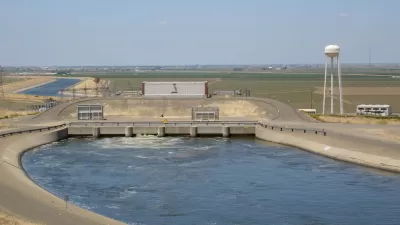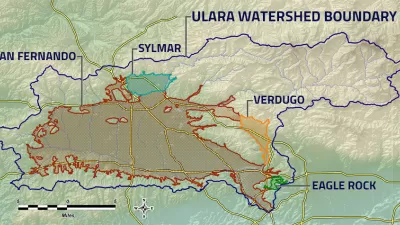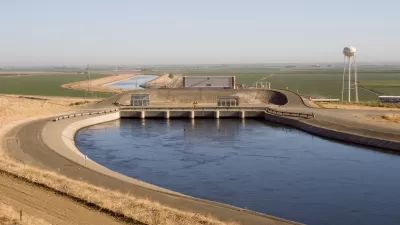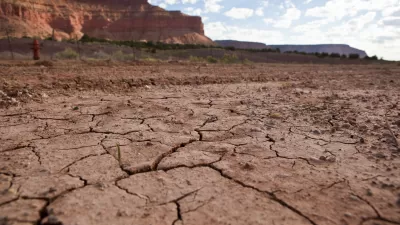The region has poured over a billion dollars into storage infrastructure and demand management policies in anticipation of worsening drought conditions.

Despite Governor Newsom's recent warning that California is, once again, facing drought conditions, reports Laura Bliss for Bloomberg Green + CityLab, "highly urbanized Southern California has a record 3.2 million acre-feet of water in reserve, enough to quench the population’s needs this year and into the next." This reserve is "thanks in large part to tremendous gains in storage infrastructure and steady declines in water use — driven by mandates, messaging, and incentive programs — belied by the region’s storied reputation for thirst."
Over the last two decades, Southern California "has invested more than $1 billion in new storage infrastructure, including a nearly trillion-liter reservoir at Diamond Valley Lake and the Inland Feeder Pipeline, a 44-mile network of tunnels and pipes that more than doubled capacity for deliveries from the State Water Project, California’s massive system for water storage and delivery that serves many its cities."
Additionally, "the last drought triggered changes in how Californians consume their precious resource. At the press conference last week, Newsom praised the 16% reduction in water use the state has made since 2013." Today, Los Angeles "uses less water now than it did in the 1970s, despite adding 1 million residents," and "[s]ince 2009, nearly 52 million square feet of lawn have been replaced through rebates and outreach programs boosting drought-tolerant succulents, flowers and chaparrals."
Historically, Los Angeles has drawn much of its water from outside the region, but with California's water supplies set to dwindle due to climate change and intensified drought, "L.A. hopes to wean itself off of imports and expand its capacity for self-sustenance. Mayor Eric Garcetti has pledged to source 70% of the city’s water locally by 2035, while L.A.’s latest urban water management plan calls to reduce per capita water use to 100 gpcd [gallons per capita per day] by 2035."
"There is no supply in California that is not vulnerable," says Newsha Ajami, director of urban water policy at Stanford University's Water in the West program, citing the importance of demand management as "the best and cheapest way we can approach water security."
FULL STORY: Facing Drought, Southern California Has More Water Than Ever

Maui's Vacation Rental Debate Turns Ugly
Verbal attacks, misinformation campaigns and fistfights plague a high-stakes debate to convert thousands of vacation rentals into long-term housing.

Planetizen Federal Action Tracker
A weekly monitor of how Trump’s orders and actions are impacting planners and planning in America.

San Francisco Suspends Traffic Calming Amidst Record Deaths
Citing “a challenging fiscal landscape,” the city will cease the program on the heels of 42 traffic deaths, including 24 pedestrians.

Defunct Pittsburgh Power Plant to Become Residential Tower
A decommissioned steam heat plant will be redeveloped into almost 100 affordable housing units.

Trump Prompts Restructuring of Transportation Research Board in “Unprecedented Overreach”
The TRB has eliminated more than half of its committees including those focused on climate, equity, and cities.

Amtrak Rolls Out New Orleans to Alabama “Mardi Gras” Train
The new service will operate morning and evening departures between Mobile and New Orleans.
Urban Design for Planners 1: Software Tools
This six-course series explores essential urban design concepts using open source software and equips planners with the tools they need to participate fully in the urban design process.
Planning for Universal Design
Learn the tools for implementing Universal Design in planning regulations.
Heyer Gruel & Associates PA
JM Goldson LLC
Custer County Colorado
City of Camden Redevelopment Agency
City of Astoria
Transportation Research & Education Center (TREC) at Portland State University
Jefferson Parish Government
Camden Redevelopment Agency
City of Claremont





























